For many Indians, Ladakh is one of those elusive dream destinations. Flights are expensive, the atmospheric conditions are not the most favourable, the drives are long and hard, and the terrain can be harsh and unforgiving. This was true for us as well, where many trips had been planned and cancelled, and the dream remained elusive. But the region always held a special fascination for us, as it does for most people, with its dream like landscape, icy blue lakes, dark towering peaks of the Karakoram, and stunningly diverse people. It is a photographers dream and Hoshner was especially keen on losing himself in its wild beauty.
Then one day, as these things are wont to happen, the pieces fell into place and the Ladakh dream became a reality. We had just quit our jobs; it was the first journey of the rediscovery project, and like little kids, we clambered over each other to get a glimpse of the snow capped Ladakh range which dwarfed the city of Leh as we descended into the tiny airport. Our journey and the rediscovery of India had begun.

The team from Voygr, with whom we planned our trip, met us at the airport and briefed us on the itinerary, warning us more than once to make sure we rested well that day. It’s one of those things you hear all the time, about the difficulties of altitude sickness and the dangers of thin air, but you don’t really understand it till you are in that situation. So please do listen to your guides and trip planners, it is one of those times when it is not a bad thing to be a little over cautious.
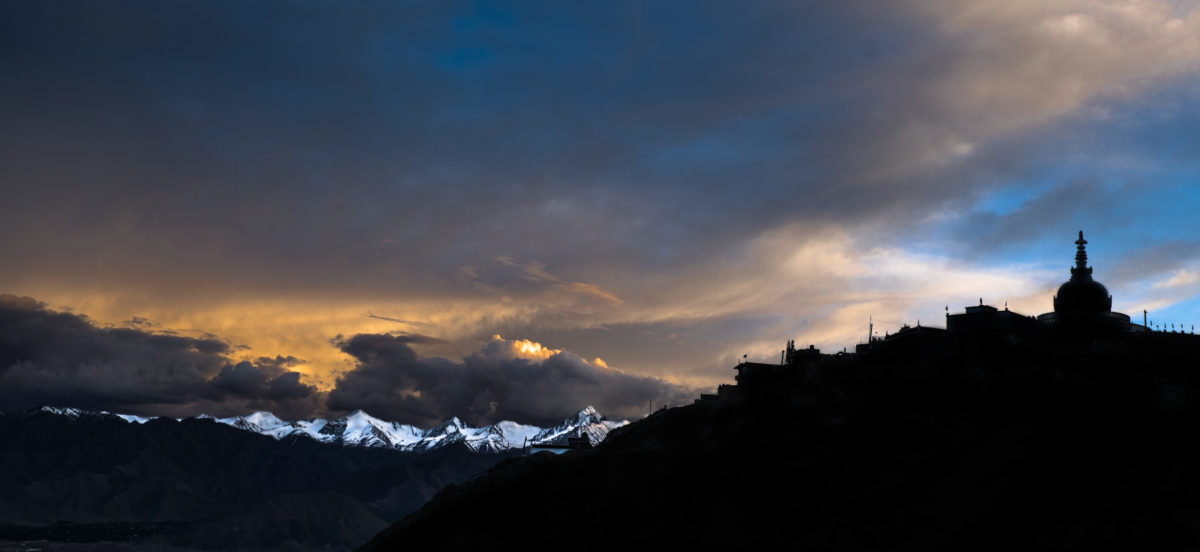
Suitably rested and loaded up on Diamox (an anti-altitude sickness pill) and plenty of water with electoral, we tested our mountain legs with a short walk up to the Shanti Stupa, the white steeple Japanese pagoda. Along with the magnificent snow clad Ladakh range, the Stupa dominates the little town of Leh, and no matter where you stood, you could see the young pagoda battling the age old mountains for the limelight. We reached the top just as the sun set, bathing the sky and the town in gentle blue hues.
The next day we set off on what was to be the first of many long drives through winding roads cut from the mountain sides; where rivers from glacial melt gushed down the side, constantly threatening to make the road one with the mountain again. The next 15 days made us appreciate why Ladakh is considered one of the most unique places in India (and perhaps the world), and as we made our way out of Leh into the vastness of this high altitude dessert we couldn’t help but be amazed at the scenes that were unfolding in front of us. Till date it remains one of our most favourite journeys, made all the more special and extraordinary by Behzad, our guide, and his fantastic team. Though we covered a lot of ground, it never once felt like we were being rushed or were on a ‘typical’ tour, where you take a selfie and leave.
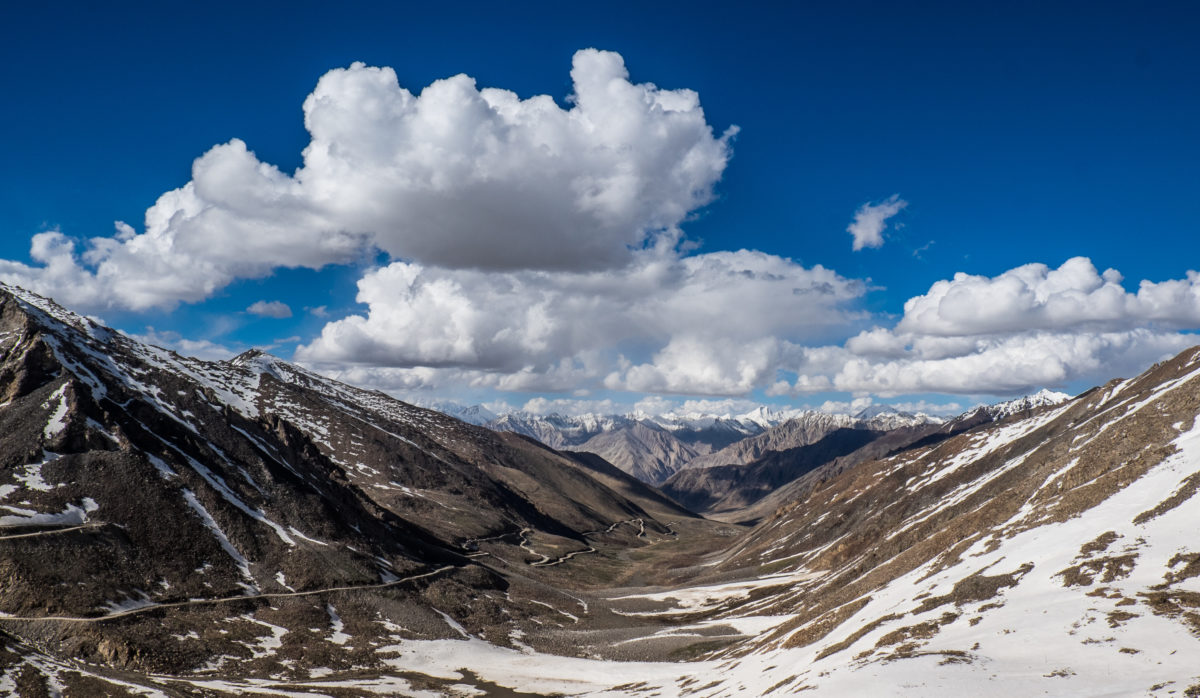
Our first stop and our favourite was the Nubra valley. Known in ancient times as Ldumra or the Valley of Flowers, it is perhaps the most stunning region of Ladakh. The fact that you need to cross the Khardung-la pass, one of the highest motorable roads in the world, to get there makes it all the more special. And a little challenging, truth be told. At 5,359 metres, the air is extremely thin, and realistically you can’t spend more than 10-15 minutes at the pass. To give you a little perspective, Everest Base Camp is at 5,380 metres.
The rivers in the valley, fed by snow melt from the Siachen glacier, have sculpted the Karakoram Range over centuries, into unique rock formations of numerous hues. It is impossible to imagine that rock faces can be different colours of the rainbow, till you come to Nubra. As you descend from the mountains into the vast desert landscape of Hunder, with miles of rolling sand dunes and brilliant blue skies, you get the distinct feeling that no matter how far you travel you will probably not know anything quite as incredible as the Nubra Valley.
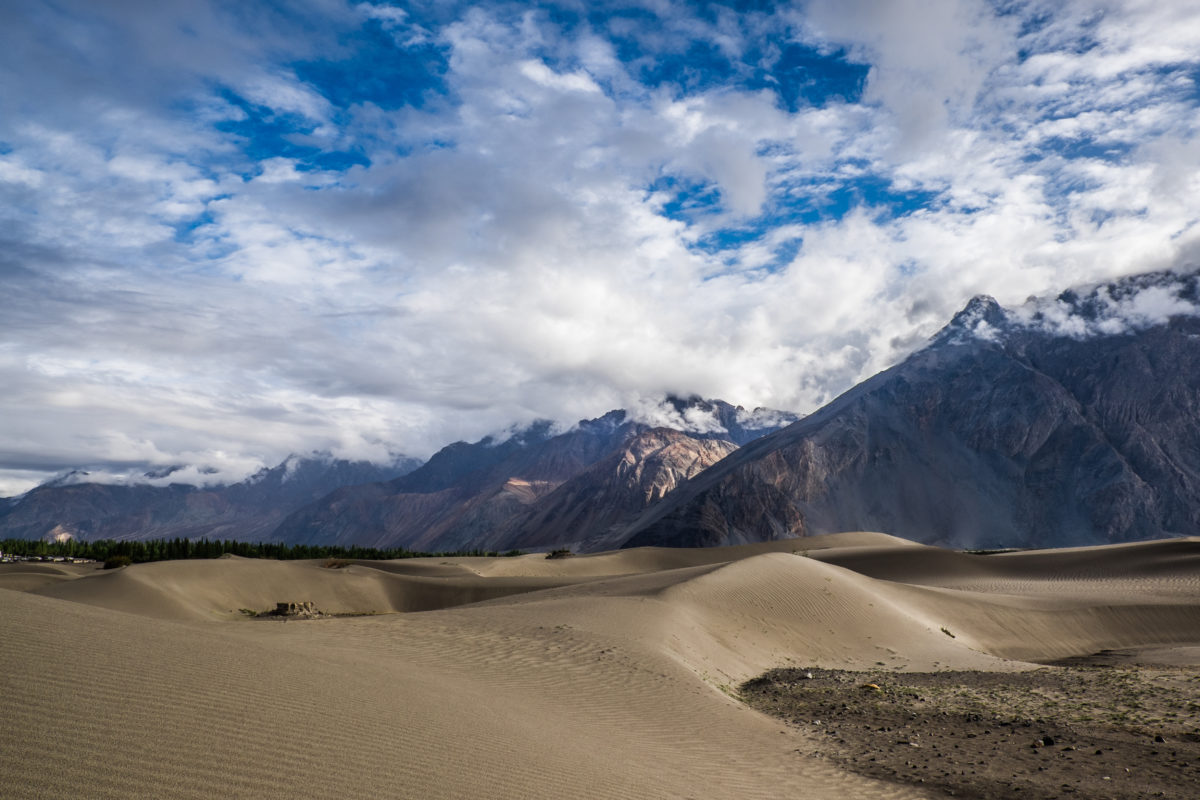
After marvelling at the wonders of Nubra, vowing to return again someday, we headed eastward. Most people who travel to Ladakh visit the Pongang Tso, however, we decided to skip it and instead drove to the far more remote and scenic, Tso Moriri and Tso Kar. Tso is lake in Tibetan. These unique lakes, perched at over 4,500 meters above sea level were formed when the Indian subcontinent drifted into the Eurasian plate, causing the mighty Himalayan and Karakoram ranges to rise out from the catatonic crashing of land mass. Today these lakes are an oasis of calm and splendour, with various shades of aquamarine surrounded by snow-capped peaks standing 6,000 meters tall. The lakes are also home to various migratory birds and the plains around support the Chang Pa nomadic tribes, breeders of the famous pashmina sheep, who have over the years wandered over from China and Tibet making these areas their home. Tso Kar, a salt water lake, is also a source of salt for the nomads and villages in the surrounding region.
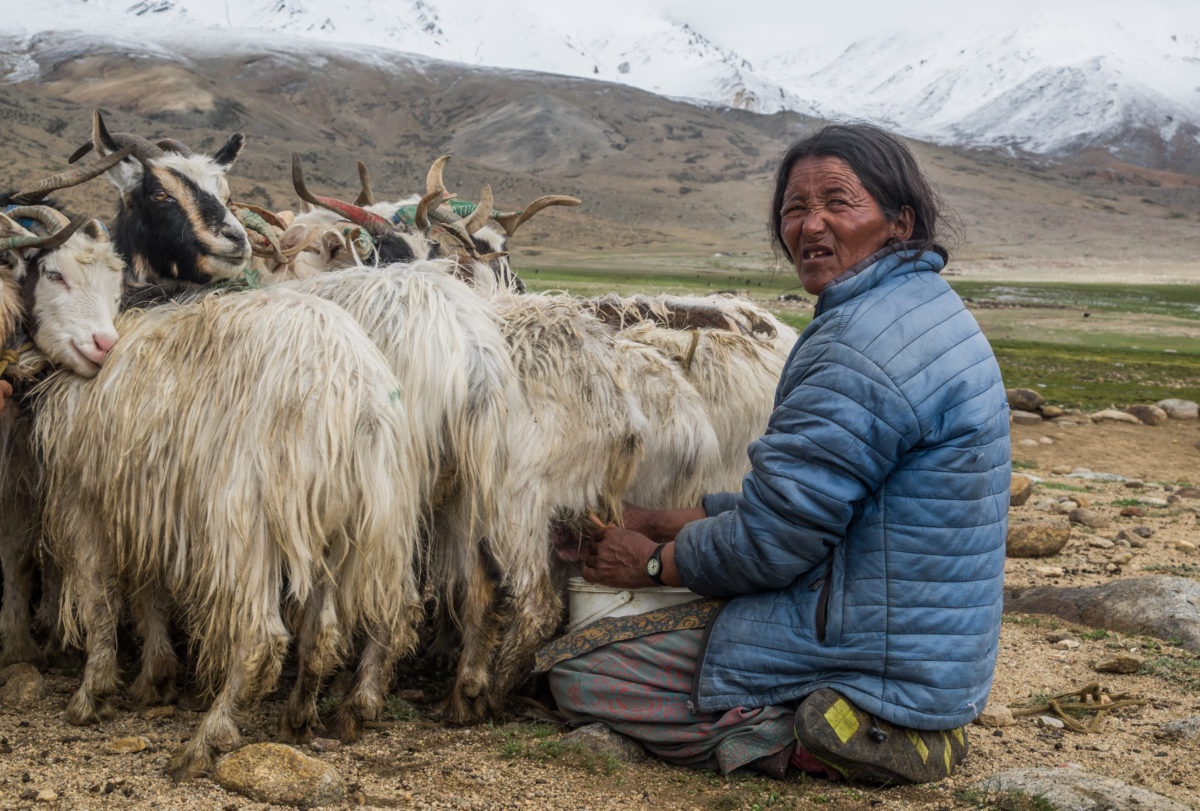
At Tso Moriri, Voygr had arranged for us to spend a couple of nights camping with the nomads and observing their way of life, which continues unhindered by the shifting sands of time. We spent our time in the Korzok Monastery, walking the grasslands where the sheep and horses graze, and watched the nomads go about their daily routine. It was amongst the highlights of our time in Ladakh.
As part of our itinerary, we also visited the ancient village of Dah, whose inhabitants believe that they are descendants of the Aryans and claim to trace their lineage back to the armies of Alexander. True or not, it makes for a fascinating story and the people, dressed up in their traditional finery, are attractive and colourful, though the influx of tourists means the villages are getting commercialized.
The monastery at Lamayuru set in the middle of the incredible landscape which visitors over the years have described as ‘moonscape’, and Tingmosgang where we got some of our first photos of the night sky lit by a billion stars, were two other stops along the way.
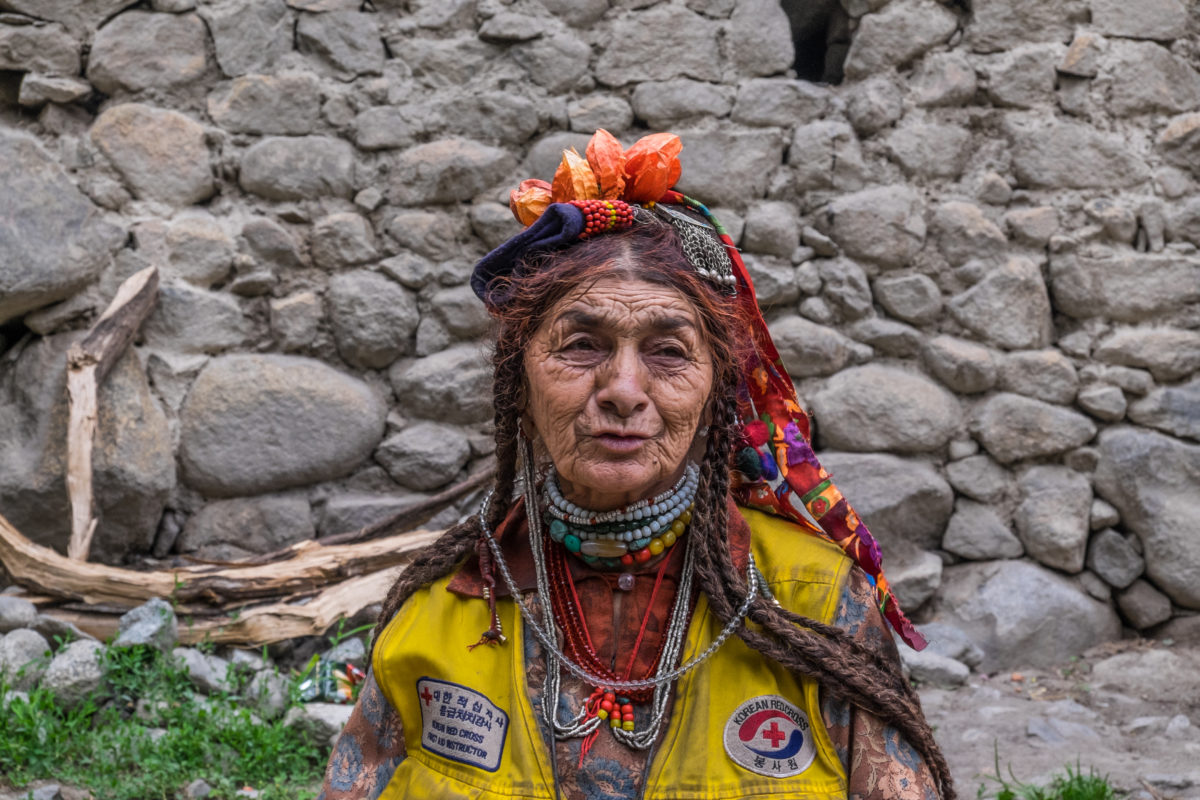
As expected, Ladakh and the surrounding regions, exceeded any expectations we might have had. Whatever you hear, read or see of this incredible region does not prepare you for the reality of just how stunning nature is in its purest form. We loved Ladakh for many reasons, for the indescribable landscape, for the ancient monasteries perched majestically on the edge of cliffs and for the mountains which seemed to shimmer and glow day or night. And we also loved it for the people, and that simple yet beautiful greeting of Jule which always draws a smile across the weathered faces of the friendly locals.
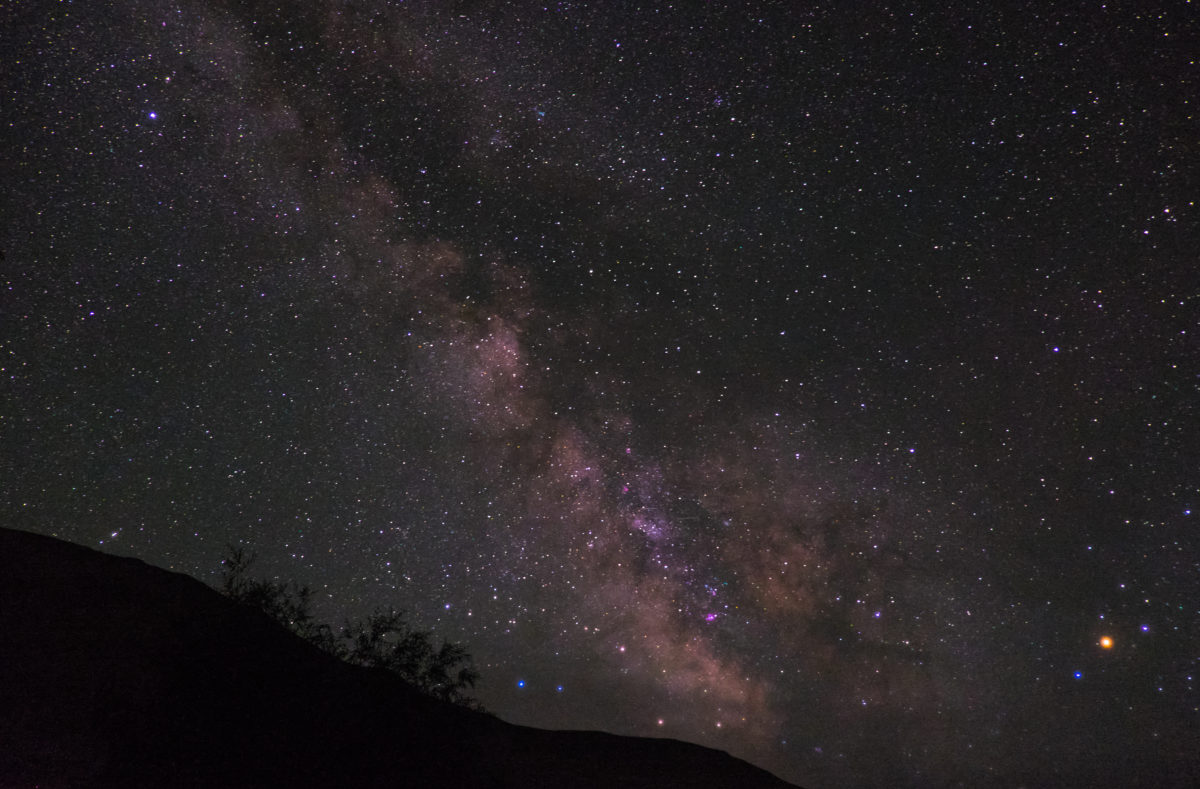
Some Useful Information
How to Plan it
Whilst you can plan your Ladakh trip on your own, it does take some doing and to enjoy a hassle free experience we would recommend you engage the services of an expert. We planned our trip with Voygr, an offbeat travel experiences company headed by Behzad Larry, who is all things Ladakh. Voygr offers fixed date pre-packaged and speciality tours including Photography, Mountaineering and Trout fishing expeditions , as well as customised trips. They are knowledgeable and professional and work with some of the best guides in the region.
Best Time to Visit
Ladakh is in the rain shadow of the Himalayas and thus doesn’t get much precipitation. This makes June to September the ideal time to visit, when the passes are open and before it gets too cold. However for those will to brave the cold for a unique experience February and March is a great time to visit Ladakh for lesser crowds, ethereal views and an opportunity to spot the elusive Snow Leopards !
How to get there
Leh and Ladakh can be accessed either by flight, or by road. If you are coming by road, there are two options, one through Manali and the either from Jammu. The drive up is stunning and if you have the time we would recommend that option. It also means that you naturally acclimatize on your way up. Most airlines operate flight to Leh from Delhi, though they can be quite expensive and are usually booked up pretty soon, especially in the summer.
Stunning pics.
A few words on the roads , and AMS/altitude sickness , as a regular visitor for many , many years . Unfortunately there are a number of myths that still flourish .
Sleeping altitude is what really matters in AMS , and the risk goes up a lot when you spend the first nights at 3000+ meters. This means that the risk is lowest on the Srinagar-Leh route , with a night halt in Kargil @ 2693 meters. That’s why the Indian Army has no first aid posts on this route . Risk is highest on the Manali-Leh route ( yes , higher than on flyins ) where everyone risks sleeping up to 1000+ meters higher than Leh : Sarchu is 4253 meters , Pang 4600-ish , and plans don’t always work out. That’s what keeps the Army medics busy in high season.
Roads are open a lot longer than commonly believed , last time I took Srinagar-Leh in early December , and last two years it closed in January . Of course risks go up later in the season ,but October on the low Srinagar-Leh route is a non-issue.
Water : this myth is hard to kill . Severe altitude sickness kills from edema , which is excess of fluids in the tissues , most importantly in the brain and lungs. Another way to get exactly the same symptoms is by binging on fluids – and plain water is even worse , since the sodium balance is disrupted by low sodium fluids in large amounts. People have died from the belief in the myth of the healing water , at all altitudes. This is why for example the Himalayan Rescue Association has warned against this strategy for more than a decade. Personally I have done better than average over the last decades by drinking when thirsty , and keeping track of my urine color. This includes flying in to the worlds highest airport , more than a thousand meters higher than Leh’s .
Hillary and Tenzing made it to the top on around 3 liters of fluids per day , search for Pugh on my blog for the background story.
Thanks Vistet! This is great stuff.
Hi,
I love you website and you photos are just breathtaking!
I am planning a trip to Ladakh next year and my mouth is watering when reading your article 🙂
However, I am a bit worried about altitude sickness, as I have never been at such high alttitudes before… I am planning to go to Nubra valley, but I am bit worried about the Khardung La pass. Do you think it’s ok to cross this pass on the third day after arriving in Leh? Could it be risky? Does Diamox really help?
I also want to spend time to explore Leh. And I would like to do a small hike and climb the peak at 4075m above Leh (www.ju-lehadventure.com/places_visit_leh_ladakh.html). The view of the city seems to be amazing from the top… Have you been there? Is the hike difficult? Is a guide needed or I can go alone? Is it safe?
Thanks in advance for your help 🙂
Elodie
Hey thanks Elodie! Stoked that you like the website and photos 🙂 Altitude sickness can be an issue especially if you are climbing, but dealing with it is largely a question of allowing a sensible amount of time to acclamatize. It is usually advised to spend a day or so just resting, doing as little activity as possible when you reach Leh, especially if you are flying in. The lack of oxygen can make even a little bit of activity feel strenuous. But once you take it easy for the first couple of days you can gradually increase your activity and you should be ok. Diamox does help but please do consult with your Doctor about that. what also helps is drinking lots of water. Crossing Khardungla the third day after reaching is fine as long as you dont spend much time up there. It is advised that you move on within 15 -20 minutes and don’t exert yourself too much at the pass. If you are looking to do a trek I would suggest you don’t do it atleast for a few days after reaching Leh maybe after you do Nubra. I haven’t really done any myself, but it’s definitely advisable that you do it with a local guide. If you need any help i suggest you get in touch with Behzad Larry at Voygr, he’s a great guy, an all round Ladakh expert and has done a fair bit of trekking in Ladakh himself. We had him organise our entire trip (which was incidentally a photo expedition) and it was great. Let me know and I can put you in touch with him. Ladakh is wonderful, one of our favourite places in India. Spend at least two weeks. 🙂
Great photos and prose! Look forward to more!
Thanks Saurabh ! Glad you enjoyed it 🙂
I love your page! Your photos are absolutely stunning! 😉
Thanks Charlotte! 🙂
I could not resist commenting. Perfectly written!
wow.. what a gorgeous destination.
Awesome photos! What a beautiful experience!
Thank you 🙂
It’s a bucket list worthy place for sure! And so MUCH to see and experience 🙂
God what a beautiful place it is! I’ve been contemplating going to Leh Ladakh for a long time now. Guess I’ll be planning something sooner than soon. Utterly beautiful pictures!!
It’s one of our favourite places Tee, probably one of the most starkly beautiful regions in the world 🙂 Glad you enjoyed the pictures! Do let us know if you need any inputs whilst planning.. We would be happy to help!